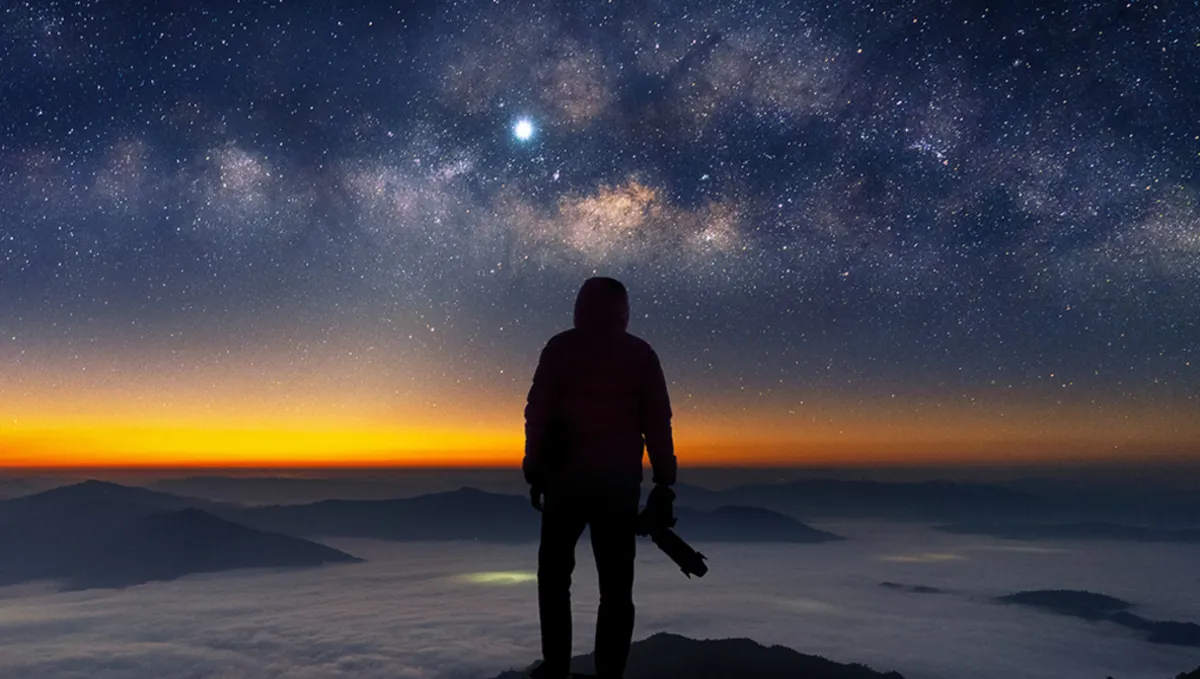
In an extraordinary feat of astrophotography, Josh Dury, a talented photographer based in Somerset, UK, recently captured a breathtaking panoramic image featuring all eight planets of our solar system, including Earth. This remarkable photograph was taken on February 22, 2025, during a rare astronomical phenomenon known as a planetary parade. This event occurs when the eight planets align on the same side of the Sun, creating a stunning visual spectacle.
Capturing a single image that includes all eight planets is no small task. Dury encountered several technical challenges, particularly with the dimmest planets: Mercury, Saturn, and Neptune. These celestial bodies do not shine brightly enough to be easily captured in standard photographic exposures. To address this issue, Dury employed a two-step approach that involved combining two distinct photographic techniques.
Initially, he took a base exposure that allowed the brighter planets to be clearly visible. Following this, he captured a second exposure using a higher ISO setting and a longer shutter speed to bring out the faint planetary bodies. Ultimately, Dury meticulously stitched together nine separate images, blending them to create a seamless, cohesive panoramic view that showcases the entire solar system.
To achieve this stunning image, Dury relied heavily on advanced astronomy software and mapping applications to pinpoint the exact locations of each planet. Even with thorough preparation, capturing Neptune, Mercury, and Saturn proved challenging due to their close proximity to the Sun and the western horizon. Dury noted that this closeness caused these planets to appear slightly misaligned compared to their actual positions in orbit. He attributed this discrepancy to atmospheric conditions, including low cloud cover near the horizon, which can distort visibility and affect planetary positioning.
This recent planetary alignment is particularly noteworthy, as it was last clearly observed in 1982. While smaller alignments involving three to five planets occur more frequently, alignments featuring all eight planets are exceptionally rare. Following this event, the next similar alignment is not expected until 2040, which adds to the significance of Dury’s photograph.
At just 27 years old, Josh Dury, known affectionately among astronomy enthusiasts as "Starman," has gained recognition within the astrophotography community for his stunning work. For this historic image, he utilized a Sony a7S II camera paired with a Sigma 15mm Fisheye lens, which allowed him to capture the vastness of space in remarkable detail.
A planetary alignment is defined by astronomers as a situation where multiple planets appear to occupy the same region of the sky from Earth’s perspective. It’s important to note that this alignment does not imply that the planets are perfectly lined up in space, but rather that they seem close together when observed from our vantage point. While alignments involving three planets are common, five-planet alignments happen less often, and those involving seven or all eight planets are extremely rare.
The planetary alignment that took place throughout late January and February of 2025 saw different planets gradually aligning. Earlier alignments included Venus, Mars, Jupiter, Saturn, Uranus, and Neptune between January 21 and 29. The culmination of this astronomical event occurred on February 28, when Mercury joined the rest of the planets, providing a unique opportunity for sky-watchers around the world to observe nearly the entire solar system from Earth.
Visibility for this event varied significantly based on geographic location and local weather conditions. In urban areas, light pollution posed a challenge for observers attempting to view the dimmer planets clearly. For those interested in spotting Mercury, Saturn, and Neptune, access to telescopes or binoculars with good magnification was essential.